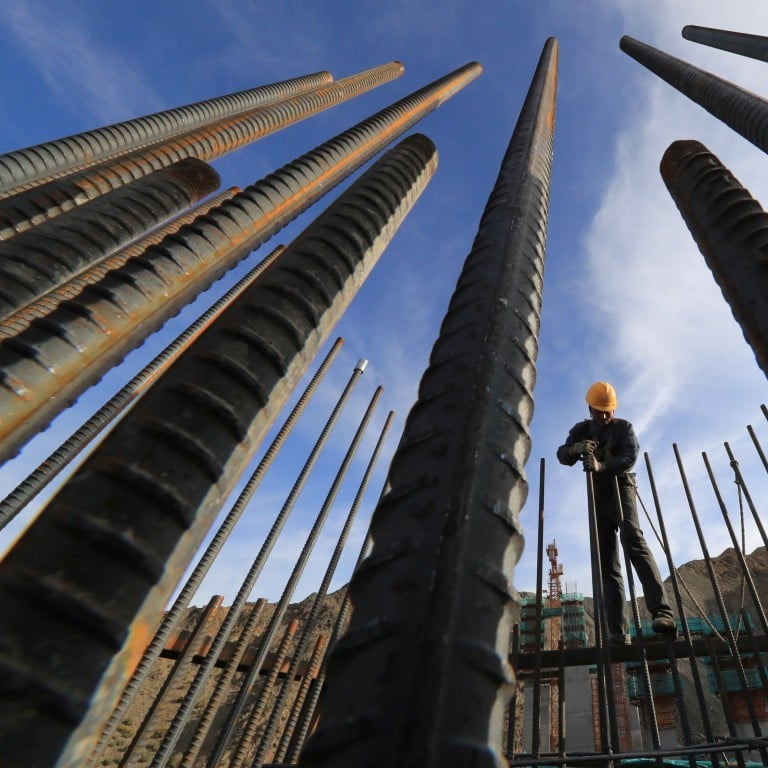
China government spending flat in August as tax cuts drain revenue, delay projects
- Total government spending fell 0.2 per cent in August compared to a year earlier, the first month this year that spending did not increase
- Tax revenues fell 4.4 per cent to 9 billion yuan (US$1.2 billion) over the same period
Government spending in China was virtually flat in August, the first time this year it has not increased, as lower revenue following personal and business tax cuts held back projects meant to help stabilise growth.
Total government expenditure in August - including both the central and local governments - declined 0.2 per cent to 1.511 trillion yuan (US$212 billion) compared to the same month last year, based on calculations from data released by the Ministry of Finance this week. Total expenditures in August rose 3.4 per cent compared to July.
Total expenditure from January to August this year amounted to 15.31 trillion yuan (US$2.1 trillion), up 8.8 per cent from the same period in 2018, according to the Ministry of Finance.
Tax revenue, which accounts for about 80 per cent of overall government income, fell to 9 billion yuan (US$1.2 billion) in August, down 4.4 per cent from the same period a year ago.
While enterprises have benefited [from the tax cuts], the growth of fiscal revenues has slowed down noticeably, and some local governments are in a tight budget situation
Vice finance minister Xu Hongcai told a forum on Thursday that the scale of tax reductions for the full year may exceed the government’s previous estimate of 2 trillion yuan ($US281 billion).
“While enterprises have benefited [from the tax cuts], the growth of fiscal revenues has slowed down noticeably, and some local governments are in a tight budget situation. In this case, it is necessary to strengthen budget management and use the money where it matters most,” Xu was quoted as saying by official Chinese press.
“A lot of the spending happened in the first half of the year,” said Rory Green, an economist at London-based research firm TS Lombard. “As we are coming into August, over the third quarter, there’s less money to spend.”
Since the start of the year, policymakers have been pushing local governments to bolster infrastructure spending by allowing them to sell more special purpose bonds. At the beginning of this year, the Ministry of Finance raised the quota for special bonds to 2.15 trillion (US$302 billion) from 1.35 trillion (US$190 billion) last year. Over 90 per cent of that bond quota has been issued so far but infrastructure spending growth only edged up to a three per cent year-on-year rate during that time, according to estimates by Macquarie Capital.
Banny Lam, head of research at China Everbright Bank International Investment, believes using up the rest of the quota could help stabilise overall fixed asset investment, which saw its growth rate slow to 5.5 per cent in the first eight months of this year, its lowest rate in fixed asset investment since last August, when it was 5.3 per cent.
“Infrastructure spending is not going to make a significant difference to growth but it will stabilise manufacturing and employment,” Lam said.
Moreover, local government officials have become more conservative about committing to costly infrastructure projects despite the strong push from the central government to get projects moving, according to Green from TS Lombard.
“Officials are held [personally] accountable for investments and projects that they made, for their whole career,” Green said. “They are very cautious about spending now, particularly when there’s so much focus on financial risk control and deleveraging.”
This means bond proceeds will be used to fund major infrastructure and energy projects, such as railways, car parks, power grids, and natural gas pipeline networks, as well as social services. But the funds raised from these bonds will still not be permitted to fund land purchases or real estate related ventures.
“[Policymakers] are tweaking these measures to try to make [local governments] spend more,” Green added. “It will help infrastructure spending but it’s not really going to be enough to change the macro picture.”

